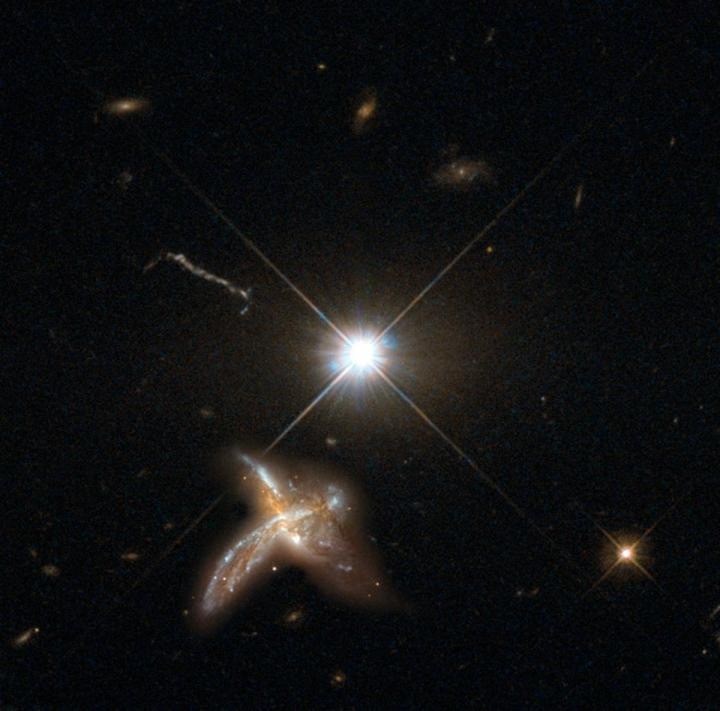May 25 2017
A team of astronomers including Carnegie's Eduardo Bañados and led by Roberto Decarli of the Max Planck Institute for Astronomy has discovered a new kind of galaxy which, although extremely old--formed less than a billion years after the Big Bang--creates stars more than a hundred times faster than our own Milky Way.
 This is an artist's impression of a quasar and neighboring merging galaxy. The galaxies observed by the team are so distant that no detailed images are possible at present. This combination of images of nearby counterparts gives an impression of how they might look in more detail. (Credit: The image was created by the Max Planck Institute for Astronomy using material from the NASA/ESA Hubble Space Telescope.)
This is an artist's impression of a quasar and neighboring merging galaxy. The galaxies observed by the team are so distant that no detailed images are possible at present. This combination of images of nearby counterparts gives an impression of how they might look in more detail. (Credit: The image was created by the Max Planck Institute for Astronomy using material from the NASA/ESA Hubble Space Telescope.)
Their findings are published by Nature.
The team's discovery could help solve a cosmic puzzle--a mysterious population of surprisingly massive galaxies from when the universe was only about 10 percent of its current age.
After first observing these galaxies a few years ago, astronomers proposed that they must have been created from hyper-productive precursor galaxies, which is the only way so many stars could have formed so quickly. But astronomers had never seen anything that fit the bill for these precursors until now.
This newly discovered population could solve the mystery of how these extremely large galaxies came to have hundreds of billions of stars in them when they formed only 1.5 billion years after the Big Bang, requiring very rapid star formation.
The team made this discovery by accident when investigating quasars, which are supermassive black holes that sit at the center of enormous galaxies, accreting matter. They were trying to study star formation in the galaxies that host these quasars.
"But what we found, in four separate cases, were neighboring galaxies that were forming stars at a furious pace, producing a hundred solar masses' worth of new stars per year," Decarli explained.
"Very likely it is not a coincidence to find these productive galaxies close to bright quasars. Quasars are thought to form in regions of the universe where the large-scale density of matter is much higher than average. Those same conditions should also be conducive to galaxies forming new stars at a greatly increased rate," added Fabian Walter, also of Max Planck.
"Whether or not the fast-growing galaxies we discovered are indeed precursors of the massive galaxies first seen a few years back will require more work to see how common they actually are," Bañados explained.
Decarli's team already has follow-up investigations planned to explore this question.
The team also found what appears to be the earliest known example of two galaxies undergoing a merger, which is another major mechanism of galaxy growth. The new observations provide the first direct evidence that such mergers have been taking place even at the earliest stages of galaxy evolution, less than a billion years after the Big Bang.